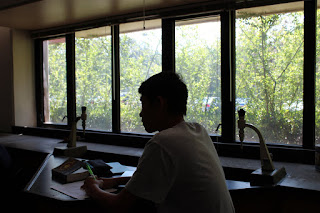1. Frame your subject because it "gives an image in depth and draws the eye to a point of interest in the image."
2. Take candids. Be obstructive. Taking candid photographs is neat because it tells a "fuller story" and it truly shows the emotions the subjects are experiencing.
3. Experiment with lighting because it "can create mood, backlighting, and silhouetting the subject to hide their features can be powerful."
ENVIRONMENTAL PORTRAITS


I like the choice of background the photographers chose for both photos and how the subjects were focused. I also think the tones of black and white and some spark and for that reason I chose these photos.
PHOTOGRAPHY SELF PORTRAITS


I really like the lighting because it really creates mood and emotions are portrayed by the subjects.
CASUAL PORTRAITS


I like how the subjects are interacting with their surroundings and the emotion portrayed by them. I I picked them because they are in black and white and to me it adds flare.
PLAN
For my self portrait project, I plan to take pictures of people who do not feel uncomfortable of me taking pictures of them. I want my subjects to look comfortable and portray emotion. I plan on taking pictures of my cousin who is in college who enjoys taking pictures. However, if I have to take pictures in school then I will pick a random subject and pick a cool background or make them do something such as stare at something or capture candid pictures of them. They can stand in front of lockers, background of flowers, or them sitting on the stairs. I will make the shot successful by filling in the frame and taking more than enough pictures if some do not turn out as well. I will also make sure my subject is avoiding merging an object. In order to prevent this, I will take pictures in different angles.

























![[Paris]](https://www.icp.org/icpmedia/d/o/n/i/donisneau_robert_239_2003_420480_displaysize.jpg)

